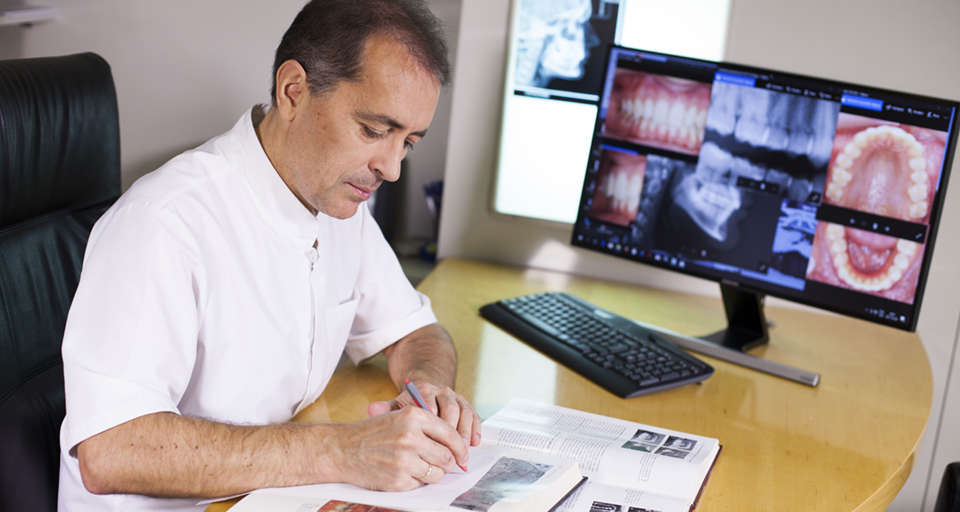No association between gingival labial recession and facial type.
Written by admin on January 10, 2016
Eur J Orthod. 2016 Jun;38(3):286-91. doi: 10.1093/ejo/cjv042. Epub 2015 Jul 1.
Mazurova K(1), Renkema AM(2), Navratilova Z(1), Katsaros C(3), Fudalej PS(4).
Author information:
(1)Department of Orthodontics, Palacky University, Olomouc, Czech Republic.
(2)Department of Orthodontics and Craniofacial Biology, Radboud University Medical Centre, Nijmegen, The Netherlands.
(3)Department of Orthodontics and Dentofacial Orthopedics, University of Bern, Switzerland.
(4)Department of Orthodontics, Palacky University, Olomouc, Czech Republic, Department of Orthodontics and Dentofacial Orthopedics, University of Bern, Switzerland piotr.fudalej@zmk.unibe.ch.
OBJECTIVE: To evaluate if facial type is a predictor of the development of gingival recession.
METHODS: A cohort of 179 orthodontic patients (76 males, 101 females; age before
treatment T S = 12.4 years, SD = 0.8) were followed until 5 years post-treatment
(T 5 = 20.7 years, SD = 1.2). The presence of recessions was scored (‘Yes’ or
‘No’) by two raters on initial (T S), end of treatment (T 0), and post-treatment
(T 5) plaster models. A recession was noted (scored ‘Yes’) if the labial
cemento-enamel junction was exposed. The clinical crown heights were measured at
T S, T 0, and T 5 as the distances between the incisal edges and the deepest
points of the curvature of the vestibulo-gingival margins. Determination of the
facial type was based on the inclination of mandibular plane relative to cranial
base (Sella-Nasion/Mandibular Plane) and the proportion of posterior to anterior
face heights (PFHs; SGo/NMe × 100 per cent) on pre-treatment cephalograms.
RESULTS: From T 0 to T 5, the number of subjects with recessions increased from
2 (1.1 per cent) to 24 (13.6 per cent), and the number of recession sites
increased from 2 to 39. However, most patients had either one or two recession
sites. The mean clinical crown height of mandibular incisors increased by 0.86mm
(SD = 0.82, P < 0.001). Regression analysis showed that mandibular plane
inclination had no effect on the development of gingival recession or on the
increase of clinical crown heights of mandibular incisors.
CONCLUSIONS: Facial type is not a predictor of the occurrence of gingival
recession.
© The Author 2015. Published by Oxford University Press on behalf of the
European Orthodontic Society. All rights reserved. For permissions, please
email: journals.permissions@oup.com.
DOI: 10.1093/ejo/cjv042
PMCID: PMC4914901
PMID: 26136434 [Indexed for MEDLINE]




